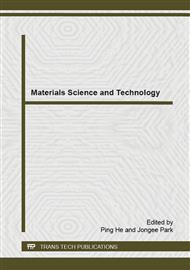p.26
p.32
p.38
p.42
p.49
p.55
p.58
p.62
p.66
The Abnormal Grain Growth of P/M Nickel-Base Superalloy: Strain Storage and CSL Boundaries
Abstract:
The Nickel-base superalloy samples were prepared by the isothermal forging in different strain rates at 1070°C. The isothermal deformation tests were carried out at constant strain rate in a vacuum environment using the Thermecmastor (Fuji Electronic Industrial Co., Japan) with a capacity of 30 ton compressive force. All the samples were deformed to a true strain of 1.04 at deformation temperature 1070°C and strain rate 0.001s-1~0.1s-1 respectively. The result is The deformation strain rate determine the position and domain of AGG and the temperature determine the severity of AGG by deformation temperature and temperature rise. The most serious region of AGG is related to the specific CSL boundaries. The fraction of Ʃ3 boundary reaches the peak point value and fraction of Ʃ7 boundary reaches the valley point value in all the samples with different strain rates. The most serious region of AGG is also related to the residual strain. In the most serious region of AGG, more dislocation is used to prefer grain growth to recrystallization, which can refine grain.
Info:
Periodical:
Pages:
49-54
Citation:
Online since:
December 2014
Authors:
Price:
Сopyright:
© 2015 Trans Tech Publications Ltd. All Rights Reserved
Share:
Citation:


